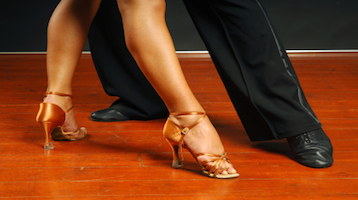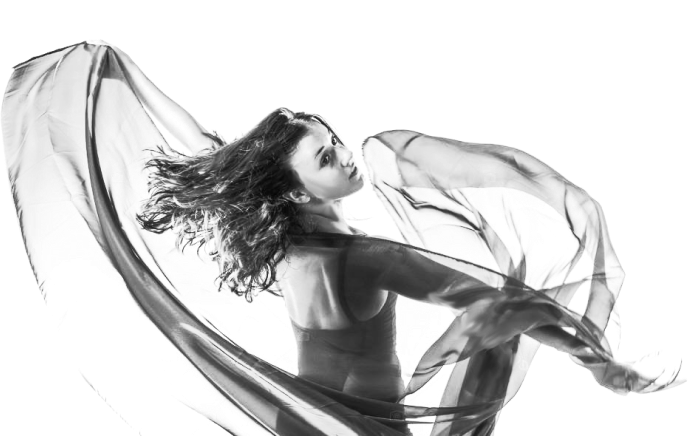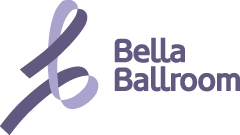
Latin Dance
Cha Cha
The Cha Cha is a playful and flirtatious dance known for it’s vibrant energy. Although it is traditionally danced to up-beat music with a Latin or Cuban beat, today it is common to dance the Cha Cha to many current styles of music including Top 40, Pop and R&B.
History of the Cha Cha
The Cha Cha is a dance that descended from another partner dance known as the Mambo. While the music of Mambo dancing comes from old traditions rooted in the heart of Africa, Mambo dancing itself was born in Cuba and the Cha Cha developed along side it.
Havana, Cuba was a very happening place in the 1940s and 1950s. It was extremely popular for the rich and famous to go and spend time in Havana resorts. Influential writers such as Ernest Hemingway and Tennessee Williams had experiences in Cuba that shaped their monumental novels, and the famous Broadway “Guys and Dolls” was set in Havana, Cuba. Very famous American dance bands and the best Latin orchestras native to Cuba played in the Havana casinos. Mambo was born in this music and entertainment hotspot and the Cha Cha was an offshoot.
The Cha Cha was originally one of the figures within the Mambo where three quicker steps followed two slower steps and weight was changed on each step. This Mambo pattern became the basic step for the Cha Cha. Being born out of Mambo dancing, Cha Cha dancing adopted the popular Latin dance technique. Like Mambo dancers, Cha Cha dancers keep their feet close to the floor, move their hips a lot while keeping their upper bodies erect.
In the 1950s, Cha Cha dancing started to spread internationally. 1952 English dance teacher Pierre Lavelle went to Cuba and brought back his version of the Cha Cha to the British Isles. The American dancer Arthur Murray simplified the dance to a 1-2-3 Cha Cha rhythm because he thought it would be simpler for his studio students. This gave the Cha Cha a slower more mechanical feel.
There are different beliefs on how the Cha Cha dance got it’s name. Some suggest that the name of Cha Cha dance can be traced back to the religious ritual dances of the West Indies. There is a West Indies plant known to produce seedpods called “cha-chas.” These seeds are used to make small rattles also known as “cha-chas” and in Haiti traditional voodoo bands consist of musicians playing the cha-cha rattle along with a bell and three drums. The leader of the band uses the Cha Cha rattle as a metronome to guide and set the time in both secular and religious singing and music. Some believe that it is from this Cha Cha rattle that Cha Cha dancing got it’s name. Others suggest that Cha Cha dancing was originally called the “Cha Cha Cha” after the sound of the dancer’s shoes as they shuffle around the dance floor. Regardless of how the Cha Cha dance got its name, the term “Cha Cha” grew to be recognized and known on a global scale as a lively partner dance.
Cha Cha Dancing Today
Cha Cha has remained one of the most popular dances in both competitions and dance halls. The Cha Cha is found in ballroom studios across the nation and internationally. More recently the Cha Cha has become popular on National television competition show such as “So You Think You Can Dance” and “Dancing with the Stars.”
The Cha Cha is recognized in both American and International styles of ballroom dance. In traditional American rhythm style of the Cha Cha, the hips move through the alternating bending and straightening of the knees. In the International Latin style of the Cha Cha, the leg that holds the weight of the dancer is almost always straight. The free leg will bend to allow a naturally settling of the weighted leg. Both techniques are respected, recognized, and take dedication to master.
In Orange County and Los Angeles it is common to find Cha Cha dance alongside it’s Latin dance counterparts. Dance clubs, restaurants, and bars that feature Salsa dancing nights commonly play Cha-cha dance music intermediately throughout the night as well as Merengue and Bachata dance songs. The Cha Cha dance performed socially at night clubs commonly travels in a forward and backward motion as opposed the side to side style of Ballroom Cha-Cha dancing.
Cha Cha dance music has evolved to include happy party music of a variety of genres. Originally Cha Cha was only danced to authentic Cuban and Latin music. Today the Cha Cha is often danced to pop music including country, funk, hip-hop, and top 40. The Cha Cha is danced in 4/4 time to songs with a tempo of 110 to 120 beats per minute.
The Cha Cha remains one of the most popular dances in the partner dance world. It’s lively nature and upbeat music make it a popular choice for dancers across the globe.
Cha Cha Dance Music
- “I Need to Know” Marc Anthony
- “Oye Como Va” Santana
- “September” Earth, Wind, Fire
- “Get the Party Started” Pink
- “Rie Y Llora” Celia Cruz
- “Stronger” Kelly Clarkston
- “Just Dance” Lady Gaga
- “Besame Mama” Poncho Sanchez
- “Everybody Loves To Cha Cha Cha” James Taylor
- “El Raton” Stars of Hard Salsa
- “Bailamos” Enrique Iglesias
- “Como Me Duele Perdete” Gloria Estefan
- “Sway” Michael Buble
- “I Like It” Enrique Iglesias ft. Pitbull
- “Uh Chihuahua” Ronnie Beard
- “Ain’t No Other Man” Christina Aguilera
- “Boom Boom Pow” The Black Eyed Peas
- “Break It Off” Rihanna & Sean Paul
- “I Know You Want Me” Pitbull
- “Glamourous” Fergie
- “Cooler Than Me” Mike Posner
- “Chilly ChaCha” Jessica Joy
- “Oye Como Va” Congo Kings
- “Perhaps Perhaps Perhaps” Santo & Johnny
- “Cha Cha in Blues” Various artists
- “Cha Cha Cha Romantico” Various artists
- “Evil Ways” Santana
- “Spill the Wine” Los Mocosos
- “Cupid” Sam Cooke
- “Cha Cha Cha D’Amour” Dean Martin
- “Bang Bang” Joe Cuba
- “Like A Virgin” Madonna
- “Your Love Is My Drug” Ke$ha
- “Poker Face” Lady Gaga
- “Dynamite” Taio Cruz
- “Donde Yo Estare” Sindicato Argentino del Hip Hop
- “Bartender” T-Pain ft. Akon
- “Me Gusta Todo De Ti” Pio Leiva


